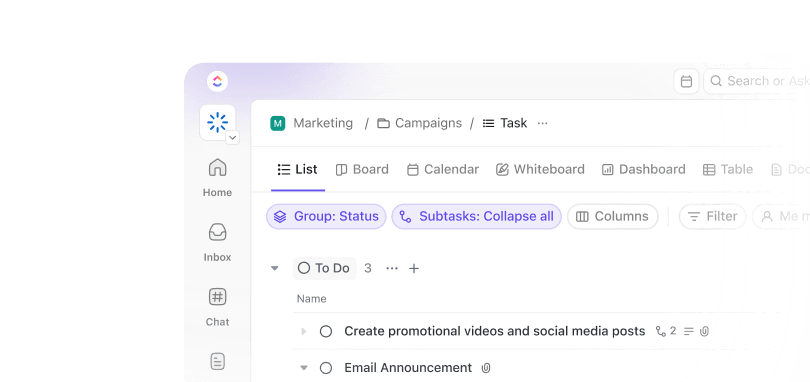Imagine having exciting future projects in the pipeline but not enough computing infrastructure and resources to accomplish them. Quite the nightmare!
The result? Project delays, elapsed timelines, and a crisis on hand.
However, there’s a way to prevent this situation—strategic IT capacity planning and management using capacity planning tools.
IT capacity management ensures adequate infrastructure and computing resources to meet current and future business requirements.
Read as we spill the secrets to seamlessly aligning IT capacity planning with organizational vision to help accomplish your business targets.
How to Implement a Successful IT Capacity Planning Process
The Fundamentals of IT Capacity Management
IT capacity planning is the process of anticipating and preparing for an organization’s future IT resource needs. It ensures that infrastructure, hardware, software, and staffing are scaled appropriately to meet both current and projected demand—helping prevent system slowdowns, outages, or performance bottlenecks. The process involves analyzing current usage, forecasting growth, and aligning resources proactively to support business continuity and efficiency.
What if the demand surges? What if the production efficiency is reduced? And what if the budget is exceeded?
Your IT equipment and resources must be capable of handling such crises! Apart from that, IT capacity management has four main objectives:
- Meeting customer requirements
- Minimizing budget overruns during resource overutilization or underutilization
- Supporting growth by aligning business capacity with future demands
- Enhancing business agility and flexibility to changing business needs
IT capacity management is essential to help prevent meltdowns and enhance performance. However, efficient management transforms IT capacity planning from a support system to a powerhouse.
The CMMI framework
One of the ways to plan IT capacity could be using the Capacity Maturity Model Integration (CMMI). CMMI is a framework that helps assess and improve the maturity level of an organization’s capacity management processes.
CMMI provides a structured approach to evaluate and enhance an organization’s ability to manage and optimize its IT resources and infrastructure effectively.
The CMMI model consists of five maturity levels, each stage representing a level of process maturity:
- Initial: Ad-hoc, reactive processes with little coordination
- Repeatable: Basic processes established but still reactive
- Defined: Well-defined, standardized, and proactive processes
- Managed: Quantitatively managed processes with continuous improvement
- Optimized: Fully optimized processes aligned with business goals and strategies
As an organization advances through the CMMI levels, its capacity management capabilities mature. The organization understands its capacity management strengths and weaknesses and becomes capable of developing a roadmap for improvement.
Service-level agreements
SLAs play a vital role in an effective capacity planning process. Service-level agreements (SLAs) are formal agreements with your IT service providers regarding the availability of services, metrics, and other parameters like service quality, availability, reliability, and performance.
Setting up SLAs is essential for capacity planning. It ensures your IT infrastructure can meet expected performance criteria.
Data center management
Another integral aspect of IT capacity management is data center management. Picture a data center as a behind-the-scenes powerhouse that ensures all processes work in sync, prepares for emergencies, and guards data against cyber attacks.
Data center management is responsible for safety, reliability, and efficiency. It keeps everything running so you can save the day.
Moreover, with companies migrating to the cloud, capacity planning becomes essential. One way to ensure resource availability is through autoscaling, which ensures adequate resources are available to each user based on demand.
All these components make up the factors to pay attention to in IT capacity management. Each aspect contributes to effective management and cannot be overlooked.
The Roles and Responsibilities of IT Capacity Planners
IT capacity planners are the backbone of a business and keep the business functioning. Let’s get an overview of their key roles and responsibilities:
- Producing capacity plans and identifying requirements based on the organization’s business planning cycle
- Identifying the need for an increase or reduction in hardware requirements
- Monitoring resources and system performance to generate information such as targets, deadlines, and resources
- Predicting demand, ensuring technical harmony, and generating managerial reports
- Assessing and testing new technological solutions to serve business requirements and save time and cost
- Determining the ideal performance service levels that are best suited for long-term maintenance and justified cost
- Coming up with solutions for IT performance-related problems and hindrances to accomplishing targets
- Comparing all performance metrics and using those numbers to build foolproof strategies for the future and move toward enhanced resource allocation
IT capacity planners are integral to business growth. They ensure that the demand is forecasted in time, the infrastructure and resource requirements are met, and the SLAs are honored with utmost customer satisfaction.
IT Capacity Management Strategies
Before discussing the best strategies, let’s distinguish between capacity planning and management.
Capacity management is an approach that focuses on the business’s infrastructure to meet the business requirements during periods of demand fluctuations. All concerns regarding the infrastructure size, including processing power, memory, and storage, come under the management process.
Capacity planning is a small part of the broader term capacity management. It refers to how an organization establishes its current and future needs.
While capacity planning is only the initial activity, capacity management is a relatively long-term process.
Now that we have understood the difference let us explore some strategies to simplify IT capacity management.
1. Prioritize based on company goals
Imagine a scenario where different employees are chasing different goals. What will this result in but chaos, right?
A well-charted-out capacity planning strategy is the foundation for accomplishing goals and keeping teams focused. Teams working towards a unified goal show greater focus and productivity, resulting in optimum outcomes.
To get started, take inputs from project leads and understand their current engagements and future expectations. This way, you bridge the gap and ensure everyone contributes to building and working toward the strategy.
Additionally, integrate Resource Management software to simplify team management and monitoring. gives a smart touch to team collaboration. Its real-time reporting and dashboards allow you to analyze progress and strategize ahead continually.

2. Analyze overall demand
Understanding the balance between capacity maintenance and growth is tricky but essential.
Business expansion, indeed, is exciting. However, understanding the maintenance demands is vital to avoid over-commitment.
Accounting for uncertainties and incorporating strategies such as studying the market and examining past demand can help analyze demand. And what’s better than combining agile and waterfall approaches to do so?
At first, this might seem like a lot, but not with .
Workload view helps analyze how much work is completed and whether the available resources are enough to meet the demand. Not only this, but Goals allows you to stay on track with real-time performance tracking.


3. Analyze current capacity
A realistic view of the team’s current capacity is the first thing to overcome poor capacity planning challenges.
The traditional method to calculate this is to account for the work hours minus time off and unplanned work. The resultant number is the current capacity.
However, adopting the agile method proves more effective. It looks at the velocity (in story points) of previous sprints and adds a view of available engineering hours to arrive at the expected capacity. Irrespective of the procedure, understanding the future capacity needs in the short to long run establishes grounds to meet your goals.
Try using the Technology Needs Analysis Template to assess the current status of your organization’s technological infrastructure and determine the future technology needs of your business in an interactive, colorful, and easy-to-use template.
For example, if you estimate the individual employee capacity at 40 hours per week, your estimation is bound to fail. This is because not all of them would actively work on the project for 40 hours straight. Consider time taken for meetings, administrative tasks, time offs, etc, before calculating the actual time for which they are available.
This is one of the most common challenges you might face, and to simplify it, try using Time Tracking and Global Timer. You can also get this done quickly using capacity planning templates.


4. Evaluate options with scenario planning
There can be more than one way to accomplish a task. However, not all paths lead to the same outcomes. Therefore, it’s essential to evaluate different approaches using scenario planning.
Consider the financial and qualitative impacts of each option. Evaluate the cost of each listed option and the quality it can deliver before making a choice.
Use a visual canvas to evaluate all your options and their pros and cons. Whiteboards provides a collaborative way to brainstorm, develop, and execute all your ideas.


5. Implement, monitor, and alter strategies
IT capacity planning is not a rigid structure that follows a fixed path. However detailed your calculation, there are bound to be some inaccurate estimations and some misses in deliveries. Understand that capacity management is an ongoing process. Once you have finalized and implemented the IT capacity plan, you must monitor it to ensure you get the planned results.
Reallocating resources is often unavoidable to prevent bottlenecks. All you have to do to manage these momentary shifts is employ a resource planning tool. Also, resource planning templates can be helpful.
’s Resource Planning template helps identify potential bottlenecks, monitor resource usage, and analyze tasks to provide real-time progress updates. With this template, you can:
- Visualize all the resources and tasks in one place
- Align the team with the goals of collective success
- Maximize resource efficiency by ensuring they are not over-allocated
- Identify the potential resource conflicts to eliminate them beforehand
These strategies aren’t just tools but can serve as a support system while you build a safety net for your IT resources and infrastructure.
Also Read: Helpful templates for technology managers and IT teams
IT Capacity Management Best Practices
Good capacity planning leads to improved company efficiency and happier employees. Here are some of IT capacity management best practices that have shown proven results:
- Stay updated about new technologies: Staying updated with the latest trends helps businesses align their IT capacity management planning based on the evolving industry standards
- Continuously monitor: Identify bottlenecks such as low storage, etc., for proactive decision-making to reallocate resources and meet business requirements
- Focus on impact and prioritize: Assess the impact of IT capacity management practices on your business operations and address more business-impacting issues first
- Load testing: Conduct frequent load testing to test your IT capacity management platform against real-world scenarios and assess whether your management is foolproof to handle varying workloads
- Avoid overprovisioning: Save unnecessary expenditure and avoid underutilization of resources by keeping overprovisioning in check
- Practice resource-pooling: Consolidate and share IT resources across departments to maximize usage
- Use capacity management tools: Use capacity management tools such as to get an insight into resource usage patterns and have real-time visibility for proactive decision-making
Common Challenges in IT Capacity Planning
Over 66% of organizations often miss their project deadlines. Can you guess the culprit? Unrealistic deadline estimation, production bottlenecks, etc.. Some of the most common challenges IT professionals encounter during capacity planning are:
1. Data collection
Demand forecasts, supply chain, and warehouse management data are the foundation for capacity plans. However, the human capability to manage and identify this data can be inadequate.
Solution: Planning software mitigates this challenge associated with capacity planning. resource planning software unifies the data. It helps you track assets in a List, Table, or Timeline View and manage resource capacity in the Box or Workload View. Custom forms collect vendor data, such as material availability, while Custom Fields help track granular details like costs and downtime. All this helps simplify data collection while maximizing data quality.


2. Production bottlenecks
Production bottlenecks are when the production flow slows down due to factors such as overburdened teams or unavailability of resources. They halt smooth business operations and planning, making it hard for businesses to deliver.
Solution: s’ real-time reporting and progress bars can make life easy and identify any production bottlenecks in time to build a foolproof strategy to counter them. You can identify the progress of your project in real time to see if the progress is the same as expected on a particular day. Also, with task dependencies, you can identify exactly what is holding up progress and solve issues faster.


3. Communication
Effective communication is an invisible force that ties stakeholders together, be it external communications with suppliers and customers or internal business communication. Poorly planned or misleading communication can lead to a gap in delivery and is risky for the integrity of capacity planning.
Solution: project management tools have collaboration options where teams can chat, share, monitor, and review their progress toward goals in real time. You can bring communication under one roof and easily align action items with Chat View. It also lets you embed web pages, share project links, and include relevant people into the conversation using ‘@’ functions.


Following best practices and incorporating the right technology, you will realize that accomplishing IT capacity planning requirements isn’t hard. It’s only a strategic move that demands you to be solid on the tech front. Have the proper planning process and resource scheduling software; be prepared for any challenges.
IT Capacity management strategies and best practices, summed up:
-
Prioritize as per company goals
-
Analyze demand and current capacity
-
Conduct scenario planning
-
Use resource management software
-
Implement and monitor strategy; adjust if needed
-
Practice resource-pooling and load-testing
-
Stay abreast of new technologies
Future of IT Capacity Management
Looking forward, we can expect AI, machine learning, and predictive analysis to take the lead in IT capacity planning, something we call AIOps. AI and ML can help with different aspects of capacity planning, such as identifying peak resource utilization periods or scaling to allocate the right resources at the right time.
For instance, AI can help automate aspects of IT scaling by choosing the suitable model—horizontal scaling (bringing in more servers), vertical scaling (upgrading the hardware or software), or elastic scaling (adjusting resources based on demand).
Also, with an increasing number of businesses working in the e-commerce space, IT capacity management will become essential in ensuring that online platforms are well-equipped to meet potential surges in demand.
Dominic Ogbonna, in his book A-Z of Capacity Management: Practical Guide for Implementing Enterprise IT Monitoring & Capacity Planning, rightly says,
Manage IT Capacity Effectively With
Think of capacity management tools as a compass that helps navigate the ever-changing business demands. When done correctly by employing the best practices and integrating the right tools, capacity management can become a breeze.
Let be your trustworthy partner in simplifying IT capacity management. From strategic collaboration and real-time reporting to unveiling demand analysis, it is the go-to tool for all IT professionals. When combined with resource management templates, it covers all the requirements that you might have.
IT capacity planning is about resource management and dealing with the never-ending changes with foresight and agility. Innovative IT capacity management is the only way to succeed in the digital landscape.
Sign up for today and move closer to effective IT capacity planning.
FAQs
1. What is the IT capacity management process?
The IT capacity management process is a project management process that requires handling the surge in requirements with effective IT infrastructure management and capacity planning tools. Successful capacity planning and management ensures smooth operations and prepares the organization to meet present and future requirements.
2. What is capacity planning of ICT infrastructure?
Capacity planning of ICT infrastructure refers to the strategic forecasting of all digital resources. This kind of resource capacity planning caters to present needs and predicts future needs to ensure sufficient IT resource capacity.
3. What is capacity planning for IT projects?
Capacity planning for IT projects involves using capacity planning tools for managing and forecasting resources, including manpower, technology, and time, to ensure the smooth execution of the IT projects. It helps eliminate bottlenecks and efficiently handle the operations to accomplish targets.


Everything you need to stay organized and get work done.














